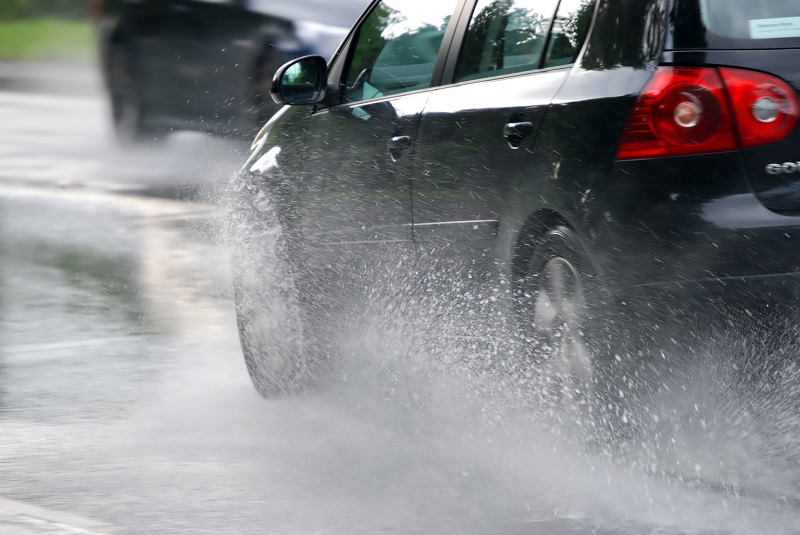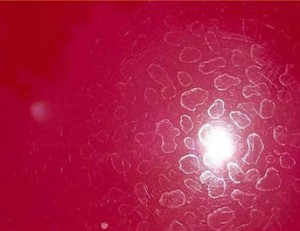
As rain falls, it collects pollutants and contaminants from the air, and this is called Acid Rain. Look at the photo below

this is the effect of dried rain on a car. The Acid Rain has etched its way into the paint and caused defects. The only way to remove the etching is to polish and buff it out with a dual action polisher and professional-grade buffing pads. Even after a short rainfall, rainwater and pollutants collect on your vehicle. The rainwater eventually evaporates, leaving a thin layer of pollutants that can damage your car’s finish. The longer you leave the pollutants and contamination on your vehicle’s finish, the more damage it will inflict on your car’s paint finish. If you have a microfiber drying towel handy, go ahead and wipe off the car so that the water spots don’t sit on the surface of your car’s paint. Snow and sleet can also result in some damaging effects and are often compounded by chemicals in road salt. Road salts are very harmful to a car’s paint surface. It is recommended that you wash your car no more than 10 days after driving on a road treated with road salt. Many people are very busy, and time always plays a factor. In reality, washing your car, even once every two weeks, can be a great way to protect your car from the salt that can eat away at the exterior of your car and create rust. When you do get your car washed, make sure that you wash it with clean water. Avoid any car washes that use recycled water to wash your car. Hand washing at home is always the best. Many car washes use very aggressive “soaps” that will strip away any wax or sealant off your car’s paint finish. Salt is especially bad underneath the car, under the fenders, and the back of the vehicle, as it will whip up behind the car as one is driving.
Always wash your car as soon as possible after driving in salt conditions. After you wash the car, open all doors, hatches, and trunks and allow them to dry or dry them by hand to keep them from freezing shut. Make sure to clean out snow and ice that has become compacted into wheel wells and under or against the fenders. These areas are very susceptible to rust damage and leaving snow and ice-filled with road salt increases the likelihood of damage. Wheel wells packed with snow can also impact the way the car handles and make braking, turning, and maneuvering difficult. There may be a few days during the winter season where it is warm enough for rain. Do not assume that the rain is going to wash all of the salt off of your car. In fact, it is often a good idea to head straight to the car wash after it rains or the temperature is warmer than 35 degrees. This is because the salt may actually eat away at the exterior of your car faster when it gets warmer out. It is recommended that you get a protective finish that will keep the salt from doing too much damage to your car.

